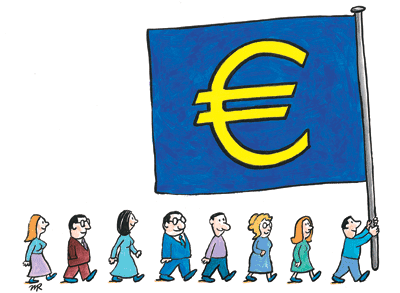The Effects of the European Debt Crisis in Greece and the Solutions taken to Fix the Crisis
By Nash Dean
June 13, 2018
Introduction and Monetary Structure
To understand the effects of the European Debt Crisis in the European Union member state of Greece, one must first discuss the structure of the European Economic and Monetary Union (EMU) and its weaknesses in addition to a discussion on Optimal Currency Area theory. Once this has been done, one must grasp what the European Debt crisis is in general, how it occurred, and what steps were taken to fix it. Only after these topics have been covered, can the true effects of the crisis in Greece be understood and implications for the future of Greece and the European Union.
The European Economic and Monetary Union, as it is known now, began originally as the European Monetary System (EMS) in 1979 with the sole purpose of keeping all the currencies in the European Economic Community (EEC) stable with each other. It used an Exchange Rate Mechanism (ERM) to accomplish this by keeping all the exchange rates in
Download the Entire Paper Here

the EEC stable with each other allowing for improved trade with other member states and drive the EEC to become a single market. The terms of the EMS required member states to keep their currency within 2.25% of a central point (James). It was able to keep the exchange rates stable by utilizing the German Deutsche Mark as the de facto anchor due to its relative strength and low-inflation policies implemented by the German bank. However, the official central point was determined as the European Currency Unit, which although was not an official currency, was the basis to launch the Euro in 1999.
This system began modification to its current form under the umbrella term European Economic and Monetary Union beginning in 1990. July 1, 1990, the EEC met and abolished the exchange rate controls, liberalizing the system to begin implementation of the now adopted three stage system for joining the Euro (Maestre). In 1997, the Treaty of Amsterdam established the Stability Pact and a new Exchange Rate Mechanism (ERM-II) which sets the terms for member states to enter the Eurozone. These terms state that the member state must have under 3% annual debt to GDP, low interest rates pegged to the interest rates of the member states with the lowest inflation rates, and under 60% debt to GDP ratio. They must also demonstrate economic convergence with little deviation towards their target rate for their current currency prior to being admitted to the Eurozone.
